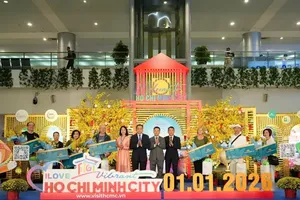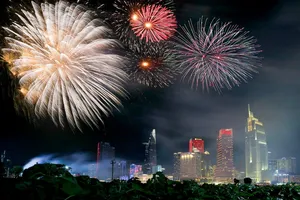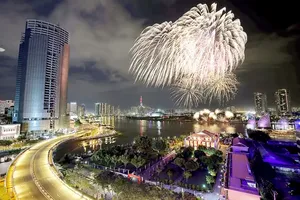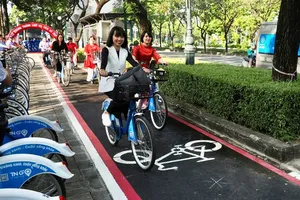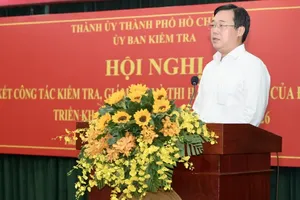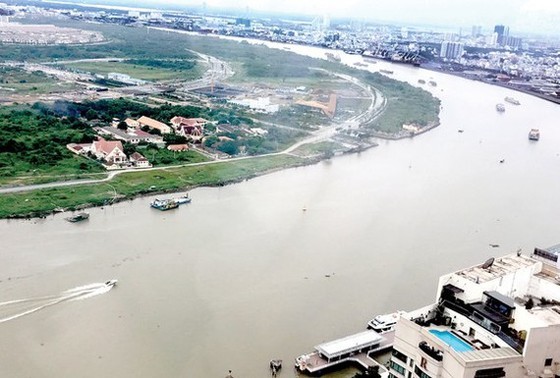 |
A section of the Saigon river |
The Saigon and Dong Nai rivers play a very important role in the supply of water sources for the southern largest city in particular and the southern provinces and cities in general. However, the Ministry of Natural Resources and Environment’s water quality monitoring system has recently recorded serious pollution in the water quality of these rivers, especially the Saigon River.
To tackle the problem, the Ho Chi Minh City Department of Natural Resources and Environment announced that the city will strengthen sanctions against organizations, businesses and individuals that commit environmental violations. Furthermore, at the same time, the Department will maintain regulations on state management in the field of water resources, mineral resources and environmental protection in the areas bordering the administrative boundaries between Ho Chi Minh City and the southern provinces of Ba Ria - Vung Tau, Dong Nai, Binh Duong, Tay Ninh, Long An, Tien Giang, Binh Phuoc and the Central Highlands Province of Lam Dong.
In addition, Ho Chi Minh City also signed an inter-provincial plan with Binh Duong province to strengthen coordination in controlling and solving pollution of Ba Bo Canal and Nhum Stream, Xuan Truong Stream, Cai Stream and the above rivers.
Moreover, the Ho Chi Minh City Natural Resources and Environment has allocated thousands of projects and issued millions of land use right certificates.
Effectively using land resources
Director of Ho Chi Minh City Department of Natural Resources and Environment Nguyen Toan Thang said that since its establishment in 2003, the department has reclaimed acquisition of land and changed the land use purpose of 2,670 projects on a total area of 17,000ha in addition to the issuance of more than 3 million land use certificates for the first time to organizations and individuals.
The restructuring of land use in the right direction has become an important financial resource for the city. Specifically, from 2014 to 2020, the revenue from the land of Ho Chi Minh City reached VND234,316 billion (US$9,8 billion) including land use fees, land rent, non-agricultural land use tax, income tax from land use right transfer, and other charges.
More importantly, many projects and public works have been implemented and completed, contributing to the improvement of city dwellers' quality of life. Furthermore, the formation of 17 export processing zones, industrial parks and high-tech zones has turned Ho Chi Minh City into an attractive location for foreign investment with more than 500 foreign enterprises including the world's leading companies such as Intel Corporation, Samsung, Nidec Sankyo, Techtronic Industries (TTI).
A representative of First Solar Vietnam Manufacturing Company shared that in 2018, the company invested US$ 1.06 billion to build a factory producing solar panels with thin film technology on an area of 44ha in Cu Chi District’s Dong Nam Industrial Park.
According to the latest report of the Ho Chi Minh City General Statistics Office, the total foreign investment capital into Ho Chi Minh City in the first 6 months of 2023 reached $2.8 billion, up 30.7 percent over the same period. Previously, the total foreign investment capital into the city always maintained a positive growth rate of over double digits. This shows that the investment environment in Ho Chi Minh City, especially the policy on land has been open and attractive to investors.
Talking about this, Chairman of the Ho Chi Minh City Business Association Nguyen Ngoc Hoa said that now about 500,000 enterprises have been operating across the city. More importantly, the number of enterprises in the fields of supporting industry, food processing, high technology, and textile in HCMC is leading the country.
Building a "green" standard on the environment
Environmental management and treatment activities are problems Ho Chi Minh City is facing. According to statistics, Ho Chi Minh City has a rapid rate of industrialization and urbanization, and fast population growth, which has put great pressure on resource management and environmental protection. In recent years, the city has faced problems such as pollution of wastewater, domestic and production waste. On average, the city receives 9,000 tons of domestic waste every day and 3,000 tons of industrial and construction waste and hundreds of tons of hazardous waste.
The Natural Resources and Environment sector has advised the People's Committee of Ho Chi Minh City to implement many programs and projects to fight environmental problems. According to the assessment, in the period from 2015 to now, the city has implemented various activities for the prevention and control of industrial pollution including the relocation of large lead-emitting industrial facilities to concentrated industrial zones. Most production facilities with a wastewater flow of 50 cubic meters or more have been controlled.
Particularly, commercial and service establishments, restaurants, hotels, supermarkets, export processing zones, industrial parks and high-tech zones all have wastewater treatment systems.



